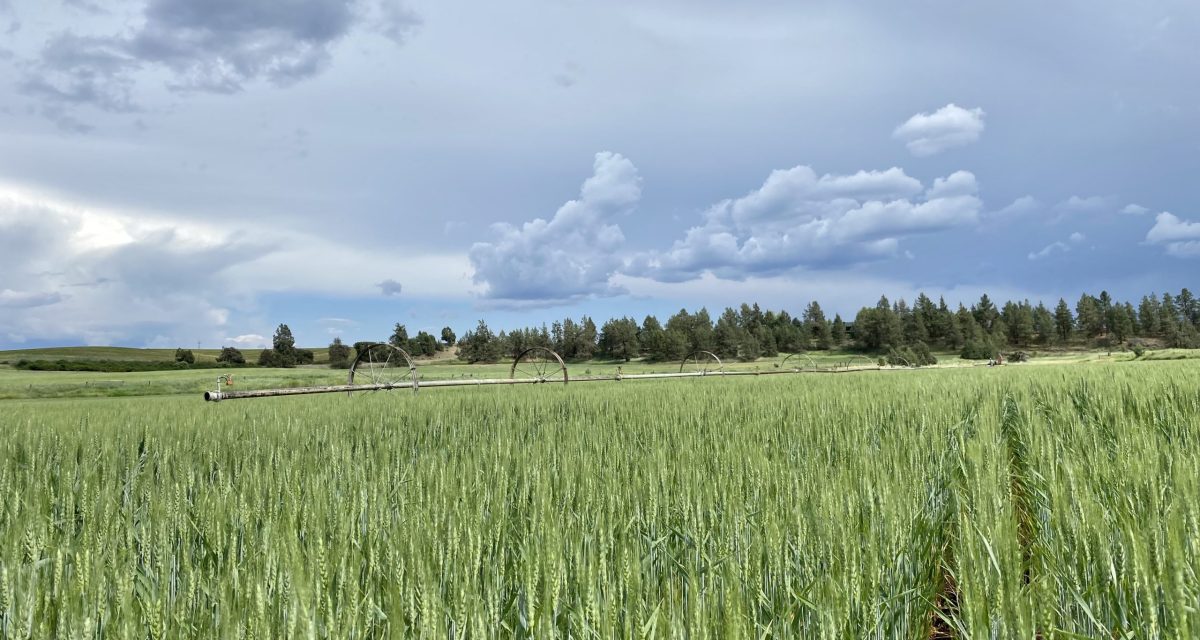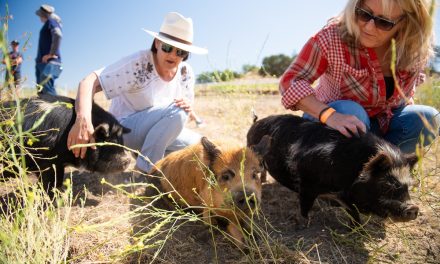Less wheat planted for current crop year — 355,000 acres, down from 385,000 acres in 2022
By Ching Lee
California Farm Bureau Federation
CALIFORNIA — Ample rain this year has allowed some California farmers to produce more wheat, even though statewide acreage dropped, with some fields lost to flooding and the deluge last fall and winter.
Farmers say prospects for the crop still appear positive even as prices have moderated from their all-time high in the spring of 2022 when the Russia-Ukraine war disrupted grain exports.
Wheat remains largely a rotational crop for California farmers, who take advantage of autumn rains to germinate fields. Hard hit by drought in recent years, they planted less wheat for the current crop year — some 355,000 acres, down from 385,000 acres in 2022, according to the U.S. Department of Agriculture.
But they intend to send more of the crop to mills — from 115,000 acres compared to 105,000 acres in 2022 — with the rest harvested primarily for livestock feed.
Claudia Carter, executive director of the California Wheat Commission, said she thinks final harvested acreage of the grain will fall between 100,000 to 120,000. She said she has heard several thousand acres have been lost due to flooding, specifically in the Corcoran area and some in the resurrected Tulare Lake bottom.
Some of the crop losses will be offset by higher yields on other farms, especially those in the Central Valley that grow dryland wheat in which no irrigation is used. Roughly 30,000-plus acres of wheat throughout the state are grown using just rainfall, she estimated.
“This year was an exceptional year for them,” Carter said, referring to dryland growers. “They’re really happy. We have some farmers (who) made comments like this is one of the best years they have had in a long time for dryland wheat.”
Steven Parsons, who grows dryland wheat in Tulare and Kern counties, said his yields so far appear to be above average, whereas lack of rain in recent years failed to make much of a crop, if at all. In following his normal rotation, he had not planned on planting more wheat last fall.
“I wish we would’ve put more in, but the rain started and stopped us,” he said, noting he was able to plant 90 percent of what he had planned. Because his fields are in the hills, with good drainage, he said he did not experience some of the flooding issues that some other farms did.
With harvest in the San Joaquin Valley still in the early stages, Parsons said he has not yet tested his crop but noted there “may be some quality issues of lower proteins in the grain.” He said the hot spell in May could have been a factor. Higher protein levels are desired by mills that produce wheat flour.
Because he farms on heavier soils, Sacramento County grower John Perry said too much water in his fields damaged his crop. He is still about a week away from harvest, but he said the damage is “going to show up in the yields.” He estimated yields on a third of his crop will be below average and two-thirds will be average to below average.
With plenty of rain this season, Perry said he did not need to irrigate, which saves him money, whereas he had to irrigate twice last year. But he said, “We would’ve much rather incurred the cost to irrigate versus having the excess moisture that damaged the plant.”
“Other than too much water, it’s been a pretty good growing season,” Perry added.
Carter said most of the wheat grown north of Stockton, such as in the Sacramento Valley, is marketed to mills to make flour. She said San Joaquin Valley growers, due to their proximity to dairies, tend to green chop their wheat earlier to make livestock feed. This allows them to double-crop, as they can grow corn, for example, immediately after wheat harvest.
California farmers also planted less durum wheat this year — 20,000 acres compared to 35,000 in 2022, according to USDA. Most of the state’s durum production is in the Imperial Valley, where growers completed their harvest in May. Marketed as Desert Durum because it is grown under irrigation in the desert valleys of California and Arizona, the wheat commands a premium and is used to make semolina, the flour in pasta.
Carter said San Joaquin Valley growers used to grow more durum wheat, but there’s “not much incentive” anymore after Miller Milling in Fresno — their main market outlet for durum — stopped producing semolina when the nearby pasta plant shut down. Imperial Valley growers still sell to mills in Arizona that take durum or export it to markets such as Italy, a key buyer.
With drought decimating fields in Kansas, farmers in the nation’s top wheat-producing state are expected to produce their smallest wheat crop in at least 60 years. Yolo County grower Larry Hunn said he’s surprised wheat prices aren’t higher, given the Kansas drought and added uncertainty of the war between Ukraine and Russia, two top- producing regions.
After Russia’s invasion of Ukraine last year, wheat prices reached a record high of more than $12 a bushel. Current prices stand in the upper $7 range, which Hunn described as “decent” compared to several years ago, when they were near $4 a bushel. Even so, he said the higher cost of fertilizer and labor “puts you maybe in the same place that you were.”
“At the end of the day, you don’t net any more dollars, or if you do, they’re worth less because of inflation,” he added.
Hunn said he’s still about a week away from starting harvest. He described yields as below normal, noting that heavy rains flooded some of his fields, which had to be drained. Still, he said his crop “looks better than I anticipated.”
The Russia-Ukraine war has had other impacts on the wheat market. U.S. Wheat Associates reported at least one mill, in Tampa, Florida, has been importing “cheap” wheat from Poland rather than buying domestic.
The decision is based on economics, the group said, noting that moving foreign wheat across the Atlantic is now less expensive than railing it across the U.S. That’s because the war displaced a lot of commodities from Ukraine, flooding the Eastern European market and pushing prices down.
California remains the nation’s largest milling state by capacity, and as such, mills here import some 2.5 million metric tons of wheat annually from other states to satisfy their production, Carter said. They mix those sources of wheat with California-grown wheat, with some mills using no more than 10 percent from the Golden State in their blends, she noted.
Aside from durum, Carter said California wheat exports have been virtually “nonexistent.” Foreign markets moved away from buying California wheat years ago when supplies started to decline as farmers grew less wheat, she said. Nationally, the higher value of the dollar has hurt exports of U.S. wheat, which becomes more expensive against other currencies.
Despite these challenges, Carter said California farmers continue to grow wheat in their rotation because it gives them options to sell it as a grain to mills or as livestock feed. She said, “It gives them flexibility.”
Feature Image: Hard Red Spring Wheat growing in Shasta County is shown here in June. Photo by Camille DeVaul/PRP













